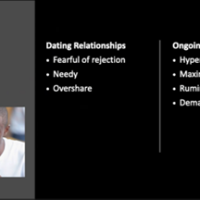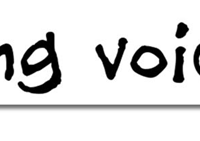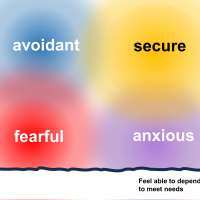Two years ago today Michael Eligon was shot by an officer of Toronto Police Service because, as the officer told an inquest into three shootings in similar circumstances, that he was “in immediate or imminent fear for his life and the life of others“.
.
This video was shown to the inquest and released to public.
.
.
.
WARNING: this clip clearly shows what you might not want to see – exercise your own choice. Viewing has been age restricted.
.
.
Policing is a difficult job, and clearly these are complex, testing situations in which we do ask a lot of police officers and without the luxury of time or video replay to enable them to assess and decide before they act. Its also worth remembering that Toronto police do deal with hundreds of situations that turn out well. That’s not at issue.
.
Let’s be crystal clear- this post is not about the actions of a single police officer but about the too often and been-going-on-for-way-too-long systemic failure of Toronto Police Service to protect and serve distressed citizens. Policing is a difficult, hazardous job, and clearly these situations are undoubtedly difficult, distressing, even. We ask a lot of police officers and even more in times like this when they are afforded too little time to assess, decide and act. Its also worth remembering that Toronto police do deal with hundreds of situations that turn out well [19,000 in 2011]. That’s not at issue and, lest you think otherwise, know that my sister and her husband were both police officers with over 40 years combined service and they too were required to deal with many similar situations with nothing more than inadequate training, a crappy radio, and a truncheon but fully equiped with their wits.
.
Toronto Police Service [TPS] has built itself an unenviable reputation worldwide of responding to what it terms “Disturbed Person Calls” with mass arrival of offers, one of “whose use-of force” training “clicks in” to override their thinking. This too often results in them acting to protect themselves and their colleagues and serve one of us with a bullet in the chest. Its difficult to not think something is going wrong, perhaps not every time, but certainly too far often.
What’s going on?
Thankfully, there is now video of some of these tragic incidents so that these events sit under a bright spotlight forcing us into the very uncomfortable position of having to ask ourselves: “what’s going on? “. Michael Eligon, clearly in a confused and distressed state, was wearing socks, a hospital gown and was carrying two pairs of kindergarden paper scissors of the kind that barely represent a threat to paper, let alone life. The officer whose bullet ended Michael Eligon’s life said at inquest that he feared for his life, so we can imagine that he too may have been in something of a confused, distressed state. I would have been. Only he can tell us. Michael Eligon reacted to the stressful situation in which he found himself- police were closing in on him like hounds on a fox and yelling at him – by grasping kindergarten paper scissors and walking towards the officers. I don’t know about you but I weren’t already confused, scared and distressed I would be by now. The police officer reacted as he had been trained, by reaching for his gun and firing into the chest. TPS Officers receive 12 weeks Use of Force training and another 20hrs each year. They also also compulsorily receive training each year in dealing with confused and distressed people and in de-escalating such situations. It would seem they get no help in joining the dots for the many real world situations that might involve both. D’oh! What we do know is that the officer has told the inquest that the training he received on dealing with disturbed person calls did not click in for him – “it did not work”.
.
The training that did click in – the training that did work – is the training on how to respond with gun, and firing bullets into human torso. Police are trained to respond to an “immediate threat to life” by pulling their gun and firing. There are no warning shots, wounding shots – officers are trained to shoot at the chest with obvious intended result.
.
It also seems that other training did work too. The officer is reported to have told the inquest that he was – ” in immediate or imminent threat to life” – precise police language that is clearly the product of training and is also heard from other officers in similar inquiry or inquest situations.
- So how come the police training on dealing with distressed persons didn’t work for Michael Eligon?
- How come it didn’t work for Silvia Klibingaitis, shot dead in October 2011 by another police officer who told the inquest she posed “imminent threat to life” and that “nothing could be done”, “I was left with no choice”.
- How come it didn’t work for Reyal Jardine-Douglas in August 2010?
- For that matter, how come it didn’t work for Edmund Yu?
Blink
Why is it that Toronto Police Service officers feel that the training that they must repeat every year them with no choice in situations in which it is specifically designed to offer them a choice?
.
And how come, if it doesn’t work management keeps turning the handle and delivering the same training without measuring how well it works?
.
Clearly, some police training does work very well indeed. Planting words in the heads of officers can work just as it is designed to – to operate at times when they don’t have time to blink, don’t have time to think. The phrase “imminent threat to life” seems to work just as well amidst the stress and confusion of a threat-to-life situation as it does in a threat-to-career situation like an inquiry.
.
The senior officer in charge of training told the inquest a few weeks ago that the TPS does not measure the effectiveness of the training that officers undergo each year designed to equip them to better deal with distressed persons – “no one does”. Well, if you believe that doublespeak here’s news – any organisation worth its salt does pay very close attention to its investment in training and at least tries [its a complex undertaking] to measure the effectiveness of that training.
.
So how is it that TPS doesn’t consider it worthwhile? How come the TPS officer in charge of training gets away with tossing out suggestions they might?
.
Is it unreasonable to expect more attention be paid to one very clear measure of the training not working? Each time at least two people have their lives changed forever – the person shot dead who has been left with no option and the officer who must also live with the consequences?
.
Could it be that TPS doesn’t bother with measuring the effectiveness of DPC training because they choose not to believe in it? Is it regarded not as an investment but as an imposition, a nuissance?
.
Do TPS deliver this training every year because they have been bullied into it by coroners inquests, politicians and you tube? In the training world this is often called “tick in the box training” – “done that, tick that box”. Its often done quickly, treated as a burden, or maybe as a couple of easy-money, easy-days in the training room. How well it works is not as important as the fact that its been delivered- bureauratic ass-covering at its finest . And its delivered again, and again, in this case once a year – a fine example of the fine art of juking the numbers.
A “Disturbed Person” is a Distressed Person
What’s at issue here is the way Toronto Police deals with what they term Disturbed Person Calls and how TPS seems unable without being instructed by a higher power , to find a way to reduce the number of Distressed Person Calls that end in bullets being fired into the chests of clearly distressed citizens.
.
TPS senior management’s response is to seek to arm its officers with tasers. This seems like more automatic thought- one more knee jerk response replacing a lethal weapon with a less lethal weapon. Yet even the manufacturers recommend they are not used in cases where people are vulnerable and in distress.
Tasers are not the answer. Even a Toronto Sun [yes, Sun, not Star] editorial says so.
.
If a distressed mamal were wandering teh streets it would likely be netted, or shot with a tranquiliser dart. Lets have at least that much compassion. The focus of his inquest is on police procedures like training and operations – it seems pretty obvious area to target, something is going wrong too often.
.
Three shootings in a year or so is a tiny fraction of 19,000 total calls but if it were a member of your family would you regard that one instance as “statistically insignificant”? It seems something is not right – something can be improved. In at least a couple of these cases several police officers are involved, one pulls their gun and shoots. How come eth others don’t?
In one case at least a couple of officers are seen clearly relaxed – hands on hips, even allowing citizens to walk by within the perimeter they have established.
.
What is needed goes deeper than procedures and policies and operations – deeper than police culture but goes into the culture of our culture.
.
We humans are mammals – and when we are distressed we can act in way s that seem strange, even threatening to other mammals [humans]. As Elyn Saks, Professor of PSychiatry and Law, says..
“People act in ways that frighten us because they too are frightened”
We need to act in a way that affects us at the basic, instinct-level response to situations in which at least one of us is distressed. Police officers deserve their senior officers to take seriously need for skills and tools that allow them the extra few milliseconds it takes to respond in difficult situations with options not inevitabilities and that break through the automatic thinking. .
.
If the neurolinguistic power of words does clearly work so well for Toronto’s police officers in high-stress situations then maybe, just maybe, that same power might be harnessed in the case of Distressed Person Calls.
Distressed Person Calls
Without even needing to change their three-letter-acronym, the police could adopt a new term that might have a subtle yet powerful influence. Even even if such a change did not prove as powerful as “imminent threat to life” it might actually help save a life or two as well as helping officers feel better equiped and more relaxed and so more able to deal with difficult calls. It might also signal a shift in the way that we as a society regard people in distress. So, what if instead of..
DPC – Disturbed Person Call
we used..
DPC – Distressed Person Call
. A “Disturbed Person” is a Distressed person
The person at the center of a Disturbed Person Call is in distress, likely confused and possibly terrified. There is also a very high possibility they are right now reliving the trauma of past events not of their making and may have had a lifetime of that. It is not offered as an easy solution, for there are none, but as a simple enough switch to make that might just buy an officer in a crisis a life-saving couple of milliseconds in which to allow other training to click in – and neurons to fire – so that the officer is better able to recognise options besides pulling the gun. It might be enough to start the process of allowing police officers to act in ways that families of those affected have been asking of police in these situations – more de-escalation, more compassion.
.
Ask any officer and they will likely tell you that they are not adequately trained to deal with people who are emotionally distressed, “mentally ill”.
“I’m no a doctor, nurse or social worker, yet I’m expected to be all three several times a day – I’m just a cop”
Police do know how to do this – Toronto’s Crisis Response Teams pair an experienced police officer with an experienced psychiatric nurse – and operate in some divisions providing first response to Distressed Person Calls. Together they are able to handle many situations involving distressed people. In many such cases the Crisis Team is not first to arrive – but other officers will wait until they do.
.
We know by now that these teams work – and as one officer on such a team said in a public talk: “business is good and its growing”. Its high time for these teams to be available across the whole city and round the clock. And its high time TPS senior officers took steps without waiting for an inquest to require them to do so..
.
Yet, many times Toronto Police Service has been called upon to roll out these teams across the city and round the clock, and has repeatedly shown far less enthusiasm for doing so than it has shown for purchasing new weapons. A simple change like Distressed Person Call might not seem enough- and by itself it clearly is not enough but it might be simple enough for the brass to grasp and take the initiative.
.
It might be a simple enough change that it can become merely the first step in a long journey down a long road that leads us to a Toronto in which we wouldn’t have so many tragedies and we wouldn’t need so many inquests.
Related
- Milverton Boulevard http://milvertonboulevardmovie.blogspot.ca/





































































































Reblogged this on DBSA NW Georgia Consumer Network.
LikeLike
Hi, welcome
and thank you!
keep an eye out there’ll be more info going on the site at
http://www.psychosis2.wordpress.com
k
LikeLike
Thank you for this post. Here in Portland (OR-US), we’ve got the same problem: cops (and sheriff’s deputies) killing and beating people in distress, and with seeming impunity.
I wish cops understood how their treatment of people in distress is–as you so ably describe–like a pack of hounds treeing an animal. The swarming, the baying, the relentless yelling–how can they expect the result to be anything *bu*t tragedy? They are all hyped up, adrenaline pumping; taught to take control–no, to dominate–and the needs of the person in distress mean nothing. .
LikeLike
Hi angelausery
Thank you, and welcome Portland!
[my bike was built there]
All i see happening under current “use of force” models – and Toronto’s is almost 10 years since its last update – is a perpetuation and escalation of trauma.
“people behave according to the system they are in” is a basic assumption of systems thinking – I believe that police officers really are not well equipped by their training to be all of: cop, doctor, nurse and peer support worker – it may be too much to expect of one person.
But do I refuse to believe that we can’t change practice for the better
we need to find the stuff that will hep us shift our thinking even when we aren’t able to think…
….and taking the simplest of first steps is the easiest way to learn and build a new habit of making changes,
If we can’t learn how to make the simple stuff work what chance do we have with the really hard stuff ?
LikeLike
Reblogged this on Pride in Madness.
LikeLike
What an idea! So easy to institute, and learn the impact over the next few years. Bet this alone would make a difference!
LikeLike
Thanks fearless
sometimes is the simplest idea that has the most impact.
…requiring as it may, not many months buries in inquests nor a committee of committees to implement but simply a few people making a choice to start, now. and showing the rest of us how.
LikeLike